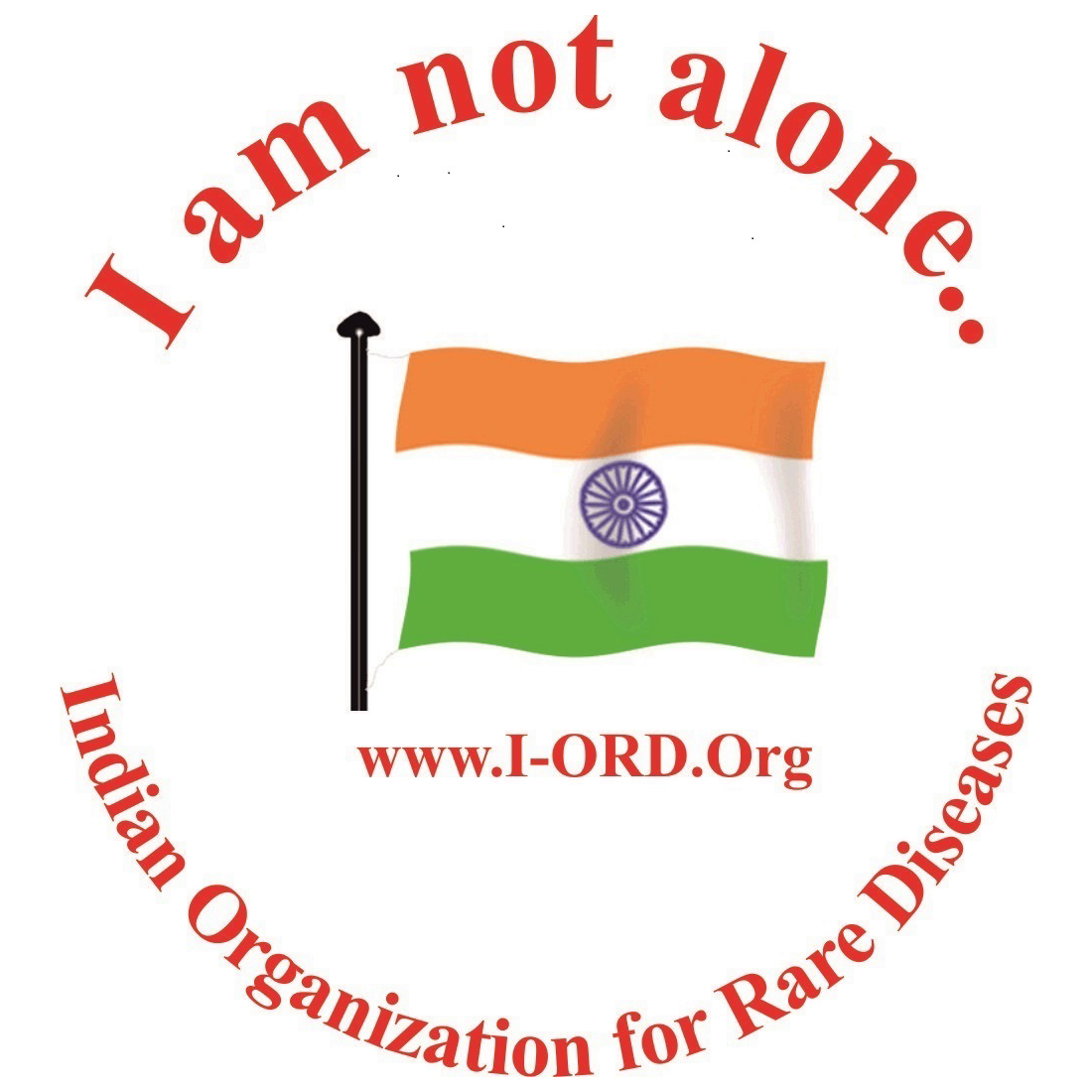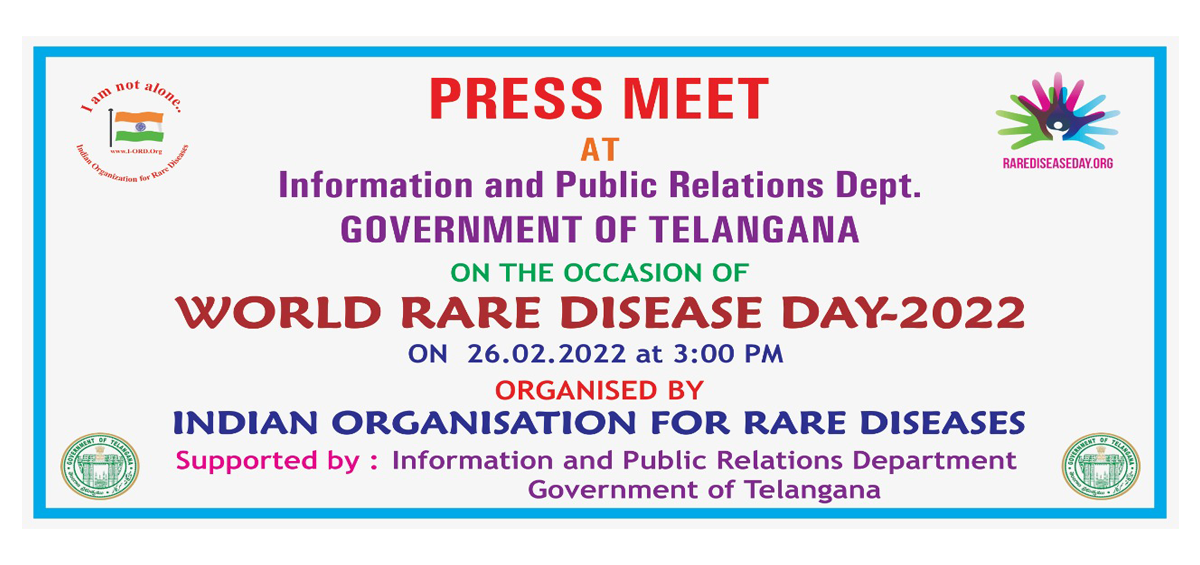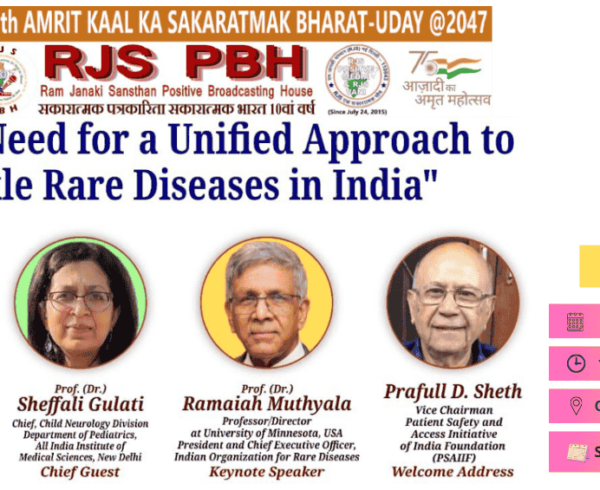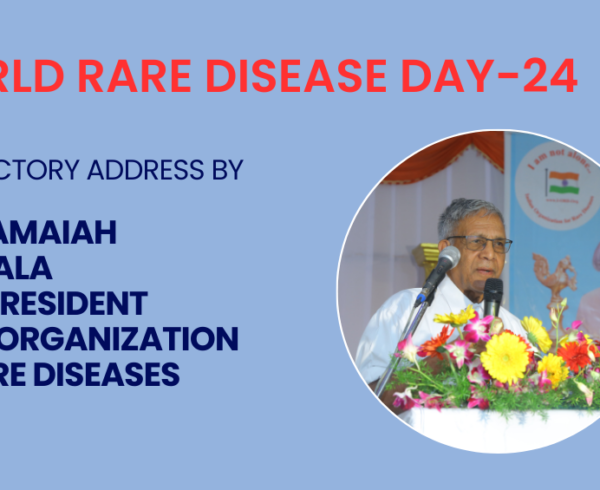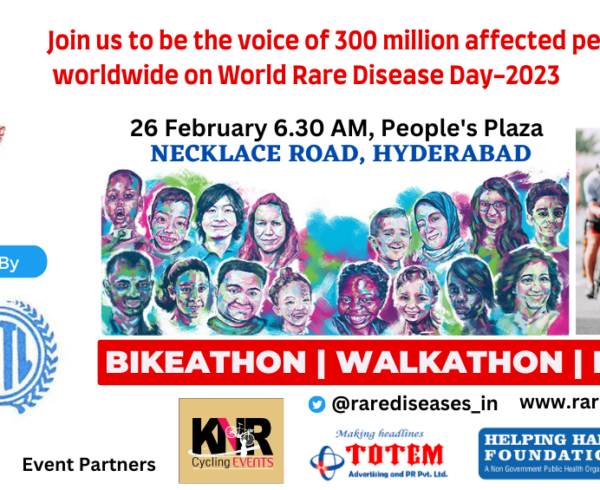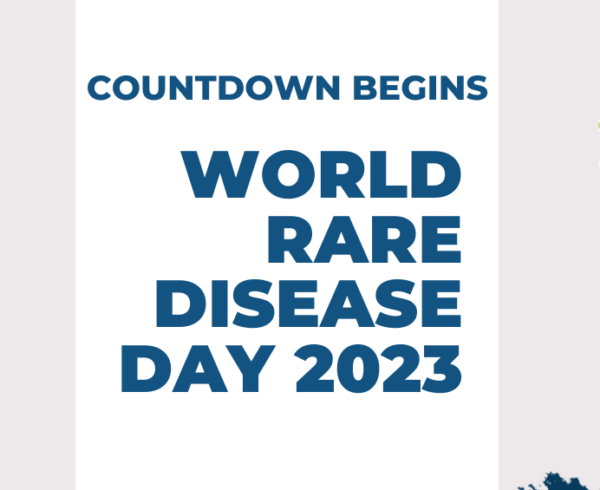The Indian Organization for Rare Diseases (IORD) is thrilled to call attention to the Word Rare Disease Day-2022 by organizing series of events to raise awareness about the issues of millions of Indians living with a rare disease. The World Rare Disease Day is observed every year on the last day of February (28th February).
To mark World Rare Disease Day, IORD jointly hosted a press conference to raise awareness about the burden of rare diseases with support from the Information & Public Relations Department, Government of Telangana on Saturday (February 26) at 3 PM at their headquarters at AC Guards, Masabtank, Hyderabad. You can check the recorded event here.
It was followed by a grand and simultaneous illumination of magnificent heritage buildings in Hyderabad with the colours of the rare disease day. These heritage structures include the Moazzam Jahi Market (a super bazaar of the last Nizam of Hyderabad) and the modern Durgam Cheruvu Cable Bridge, which is one of the longest and of its kind in the World.
Brief history of World Rare Disease Day
The World Rare Diseases Day has been observed on the last day of February every year since 2008. Today, more than 98 countries including hundreds of disease-specific and umbrella patient organizations are participating in this event and its message has been communicated in 32 languages.
Though Rare Disease Day is community-led, everyone, including individuals, families, caregivers, healthcare professionals, researchers, clinicians, policymakers, industry representatives, and the general public can raise awareness. We urge action today for this vulnerable population that requires immediate and urgent attention.
Global Burden
Many doctors don’t know a lot about these disorders. Some diseases are estimated to affect between 1 in 25,000 to 1 in 1000,000 people worldwide. This is probably the reason why nobody knows about ultra-rare diseases.
“Rare Diseases Land” is the World’s most significant countries China, and India. 80% of Rare Diseases are genetic disorders. Often, these diseases are undiagnosed; they are nameless – they are medical refugees- without a home or state.
Partial Public Health Coverage
The impact of publicly funded health insurances such as Rashtriya Swasthy Bima Yojana and Pradhan Mantri Jan Arogya Yojana showed increased access and utilization of healthcare services but not to the rare diseases’ patients due to the complexity and lack of understanding of the problems.
The flagship Ayushman Bharat health insurance scheme, which is aimed at offering Universal Health Coverage, state-sponsored Aarogyasri Schemes would not cover if, at all covered, it is only partially.
Global Focus on Rare Disease
The Rare Disease momentum is not localized in any one country. In December 2021, a global grassroots campaign led by the rare disease patient community at the 76th United Nations General Assembly at UN headquarters, New York secured the adoption of the first-ever UN Resolution on Addressing the Challenges of People Living with a Rare Disease and Their Families. Fifty-four countries sponsored the resolution, and 193 UN member states unanimously accepted the resolution.
